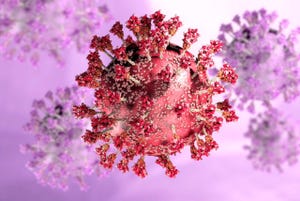Inspire Gets $40 Mil to Market Implantable Sleep Apnea Device
May 16, 2014
|
The Inspire implantable sleep apnea device with its external controller (Courtesy Inspire Medical Systems) |
A new hope for those with moderate to severe Obstructive Sleep Apnea (OSA) was offered when Inspire Medical Systems announced earlier this month that it had received FDA approval for the world's first implantable neurostimulation device to treat sleep apnea.
Now the company, spun out from medtech giant Medtronic seven years ago with the mission to develop the device, has just completed a $40 million financing round to provide funding for the commercialization of their product.
Intended for patients who are unable to use Continuous Positive Airway Pressure (CPAP) devices, the Inspire therapy uses mild stimulation of the hypoglossal nerve to maintain an open airway during sleep. The stimulation contracts the patient's upper airway muscles, pulls the base of the tongue forward, and helps keep the airway open. Inspire's website says, "In contrast to traditional OSA surgeries, Inspire therapy preserves the natural airway and facial anatomy."
The Inspire system consists of an implanted pulse generator, and stimulation and sensing leads. It also has an external programmer to store therapy settings that physicians can tailor to achieve patient comfort and treatment targets, as well as a remote control with buttons for patients to turn the system on and off.
"Inspire therapy fills an important and significant gap in the OSA treatment continuum," said Chau Q. Khuong, partner in the OrbiMed private equity firm that led the latest round of financing. "We believe that both physicians and patients will have great interest in this innovative new therapy."
In "Upper-Airway Stimulation for Obstructive Sleep Apnea," published in the New England Journal of Medicine, Patrick J. Strollo, Jr., MD, et al., concluded that "...upper-airway stimulation led to significant improvements in objective and subjective measurements of the severity of obstructive sleep apnea."
"Patients implanted with Inspire therapy who participated in the company's STAR (Stimulation Therapy for Apnea Reduction) pivotal clinical trial experienced a 68 percent reduction in apnea events, a 70 percent reduction in oxygen desaturation events, and significant improvements in daytime functioning as measured by two validated questionnaires," according to the company.
Refresh your medical device industry knowledge at MD&M East, June 9-12, 2014 in New York City. |
OSA is a health issue affecting about 18 million Americans, according to the National Sleep Foundation. According to Inspire, people suffering from OSA report significant daytime sleepiness and impaired quality of life. OSA can contribute to the development of systemic hypertension, cardiovascular diseases (heart failure, heart rhythm disorders), stroke and diabetes. In the United States, the prevalence of OSA associated with daytime sleepiness is about 2 percent of adult women and 4 percent of adult men. OSA is worldwide, with similar prevalence reported in Europe, Australia and Asia.
Stephen Levy is a contributor to Qmed and MPMN.
About the Author(s)
You May Also Like



